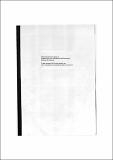| dc.contributor.author | Mwangi, W. M. | |
| dc.date.accessioned | 2011-05-03T11:26:08Z | |
| dc.date.available | 2011-05-03T11:26:08Z | |
| dc.date.issued | 1985 | |
| dc.identifier.citation | Mwangi, W. M. (1985) Low income food systems and food safety in Kenya: a case study of Kangemi peri-urban area. Discussion Paper 278, Nairobi: Institute for Development Studies, University of Nairobi | en_GB |
| dc.identifier.uri | https://opendocs.ids.ac.uk/opendocs/handle/20.500.12413/756 | |
| dc.description.abstract | This study was a part of a large study that examined food
systems and food safety in developing countries. The Kenyan study was
mainly based on a case study of Kangemi village, which is a peri-urban
area of Nairobi.
At Kangemi, two major food systems exist. There is firstly,
the typical low-income rural food systems, which mainly involve growing
own food or buying locally grown food. In this system only a few essential
items are purchased outside the farm, and nearly all food is prepared within
the home. The major food safety problem in this system is due to inadequate
drying and storage of staple food stuffs; poor practices of handling
and preparing food within the home. Food safety standards in this
system can be enhanced through teaching of food safety and extension of
primary health care programmes.
The other food system is typical of any low-income urban areas.
The people here are predominantly dependent on purchased food; consisting
mainly of a cereal or starchy root staple with some vegetables and pulses
together with supplementary sources of animal protein and fruit. Here
the main food safety problem i s due to considerable risks of deterioration,
contamination and adulteration as the food moves through the distribution
channel. In this system food safety standards can be enhanced through
devotion of societal resources to health education to all involved in the
distribution channel.
As a conclusion it must be emphasised that it is seldom appreciated
how widespread food contamination is, nor how tremendous are the
costs it imposes to our society. This study has also indicated very clearly
that at this stage of our development, food systems and food safety can be
improved and enhanced significantly only through government participation
as the private sector finds it impossible without causing undue financial
burden to low-income consumers. | en_GB |
| dc.language.iso | en | en_GB |
| dc.publisher | Institute for Development Studies, University of Nairobi | en_GB |
| dc.relation.ispartofseries | Discussion Papers;278 | |
| dc.rights.uri | http://creativecommons.org/licenses/by-nc-nd/3.0/ | en_GB |
| dc.subject | Agriculture | en_GB |
| dc.subject | Economic Development | en_GB |
| dc.subject | Health | en_GB |
| dc.title | Low income food systems and food safety in Kenya: a case study of Kangemi peri-urban area | en_GB |
| dc.type | Series paper (non-IDS) | en_GB |
| dc.rights.holder | Institute for Development Studies, University of Nairobi | en_GB |
| dc.identifier.blds | 317474 | |


